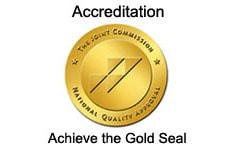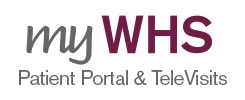
Congratulations to our Stroke Care Team.
This is the 12th year in a row UPMC Washington received this award at the Gold Plus level.
Great job team!
UPMC Washington Hospital is a primary stroke center and is committed to transportation, assessment, diagnosis and treatment within three hours of symptom onset.
According to the American Stroke Association, approximately 795,000 people have a stroke each year—610,000 are first attacks and 185,000 are recurrent attacks. Of stroke survivors, 21 percent of men and 24 percent of women die within a year, and for those aged 65 and older, the percentage is even higher. Someone suffers a stroke every 40 seconds and someone dies from a stroke every 3-4 minutes. Stroke is the number five cause of death and the leading cause of adult disability in the United States.
A stroke occurs when one of the arteries to the brain is blocked or bursts. As a result, part of the brain does not get the blood it needs and starts to die. If you suspect someone is having a stroke, call 911 immediately. Treatment can be more effective if given early. Also, if possible, note the time of the first symptom—this may affect later treatment options.
Coordinated care with emergency medical services (EMS) ensures that treatment begins in the field. EMS notifies the hospital of a suspected stroke patient, at which time the hospital implements a system-wide stroke alert. Once the patient arrives in the Emergency Department, the staff is already prepared for rapid diagnosis and treatment.
At UPMC Washington, we are committed to implementing a higher standard of stroke care by ensuring that stroke patients receive treatment according to nationally accepted standards and recommendations. We have developed a comprehensive system for rapid diagnosis and treatment of stroke patients admitted to the Emergency Department. This includes always being equipped to provide brain-imaging scans, having neurologists available to conduct patient evaluations, and using clot-busting medications when appropriate.
The center consistently follows the stroke guidelines developed by the American Stroke Association, including aggressive use of medications like tissue plasminogen activator (tPA), antithrombotics, anticoagulation therapy, DVT prophylaxis, cholesterol-reducing drugs and smoking cessation. Furthermore, these guidelines ensure that patients, once admitted, are treated and discharged appropriately. Alignment with these guidelines is a critical step in saving the lives and improving outcomes of stroke patients.
The hospital also has two dedicated stroke units—5S and 6S—whose staff receives extensive training in the treatment of stroke patients. The plan of care for stroke patients is managed by a multidisciplinary team, including physicians, nurses, physical and occupational therapists, social workers and speech-language pathologists.
If you are looking for our team of neurologists, click here to use our Physician Finder.
Join our free Stroke Support Group to learn more about stroke, share experiences and become inspired to keep moving forward after surviving a stroke. Stroke survivors, family members and caregivers welcome. Learn More – Stroke Support Group.




